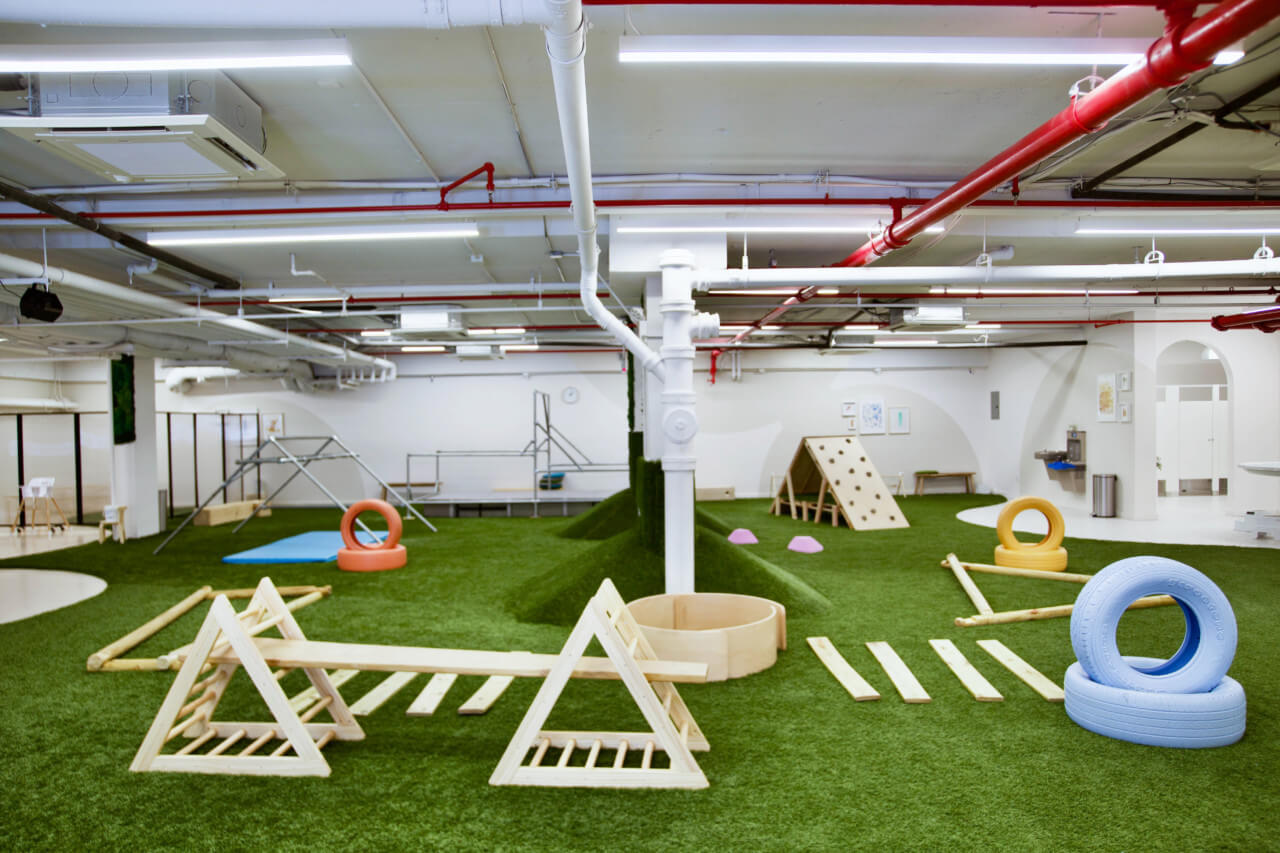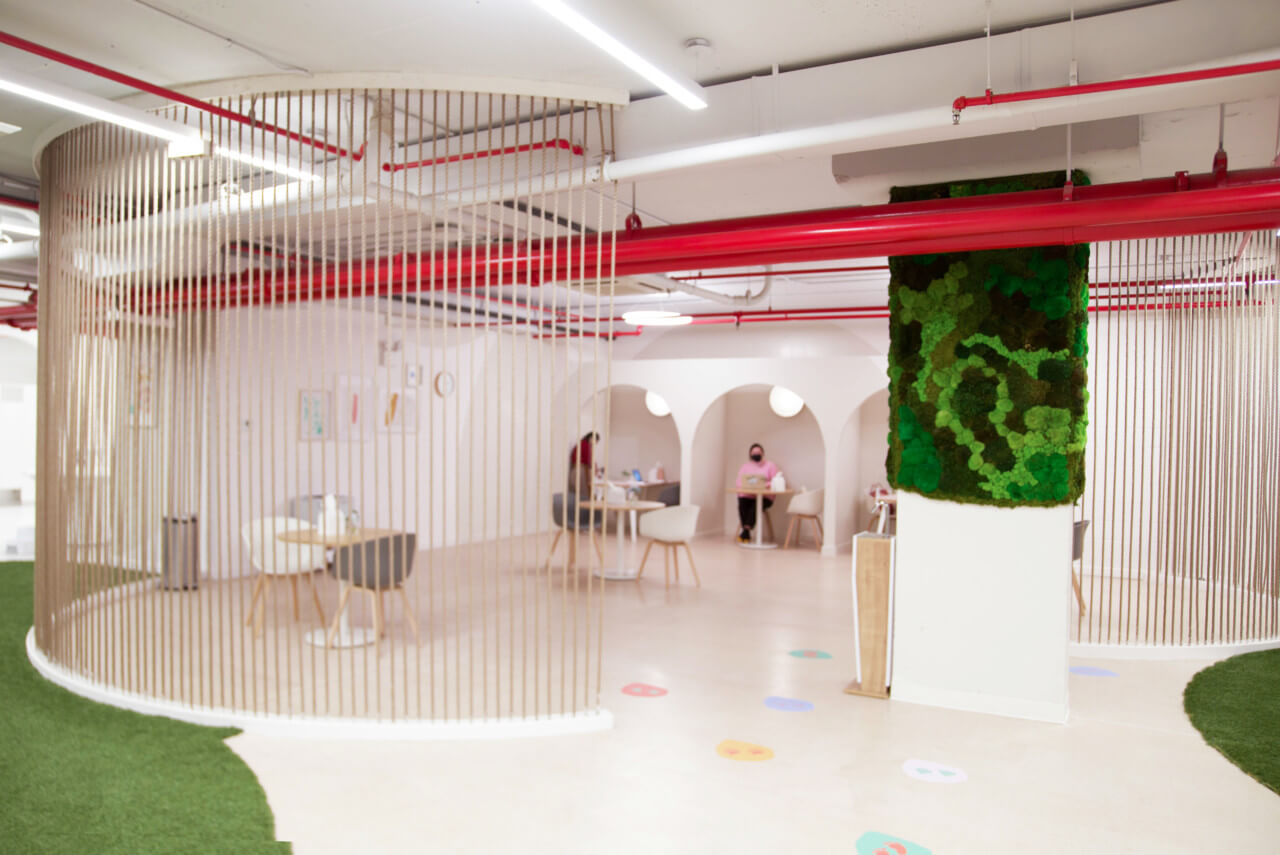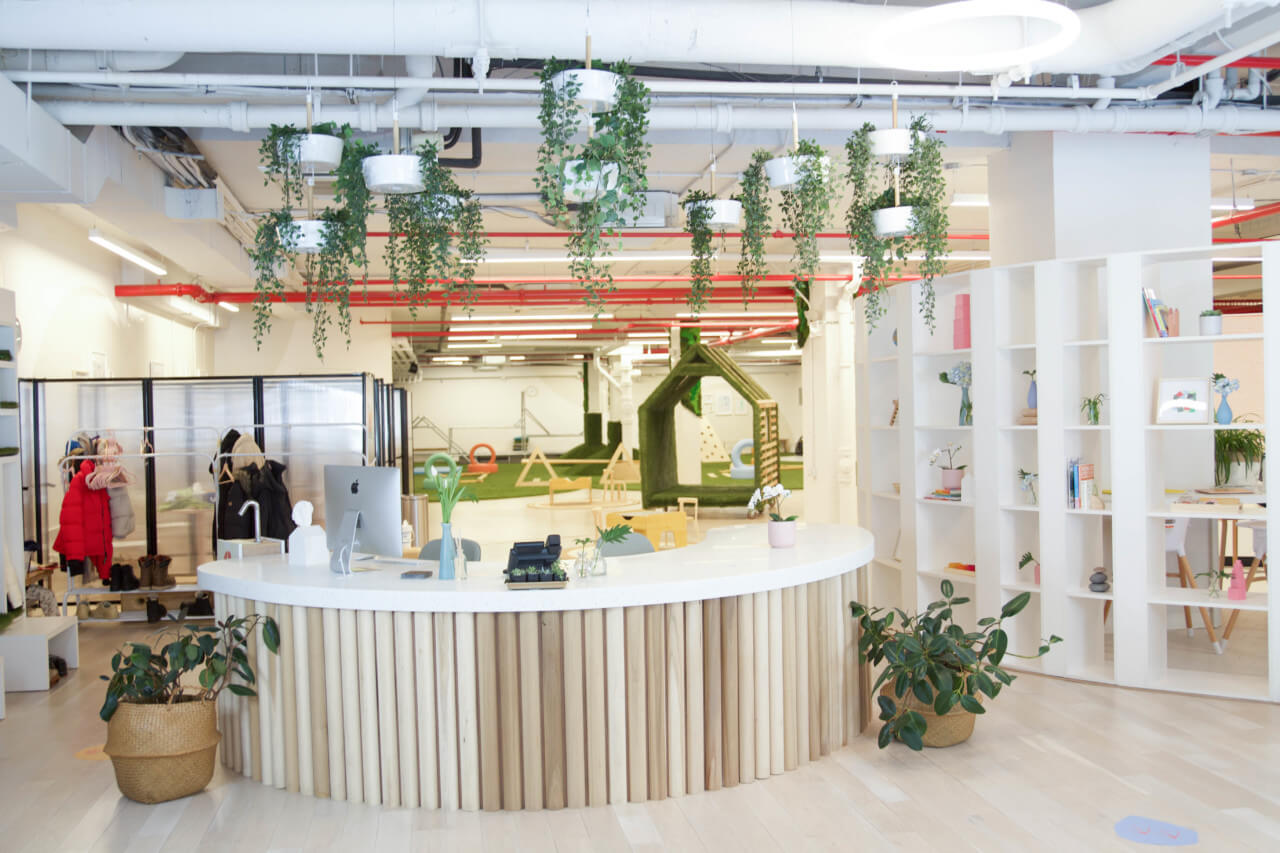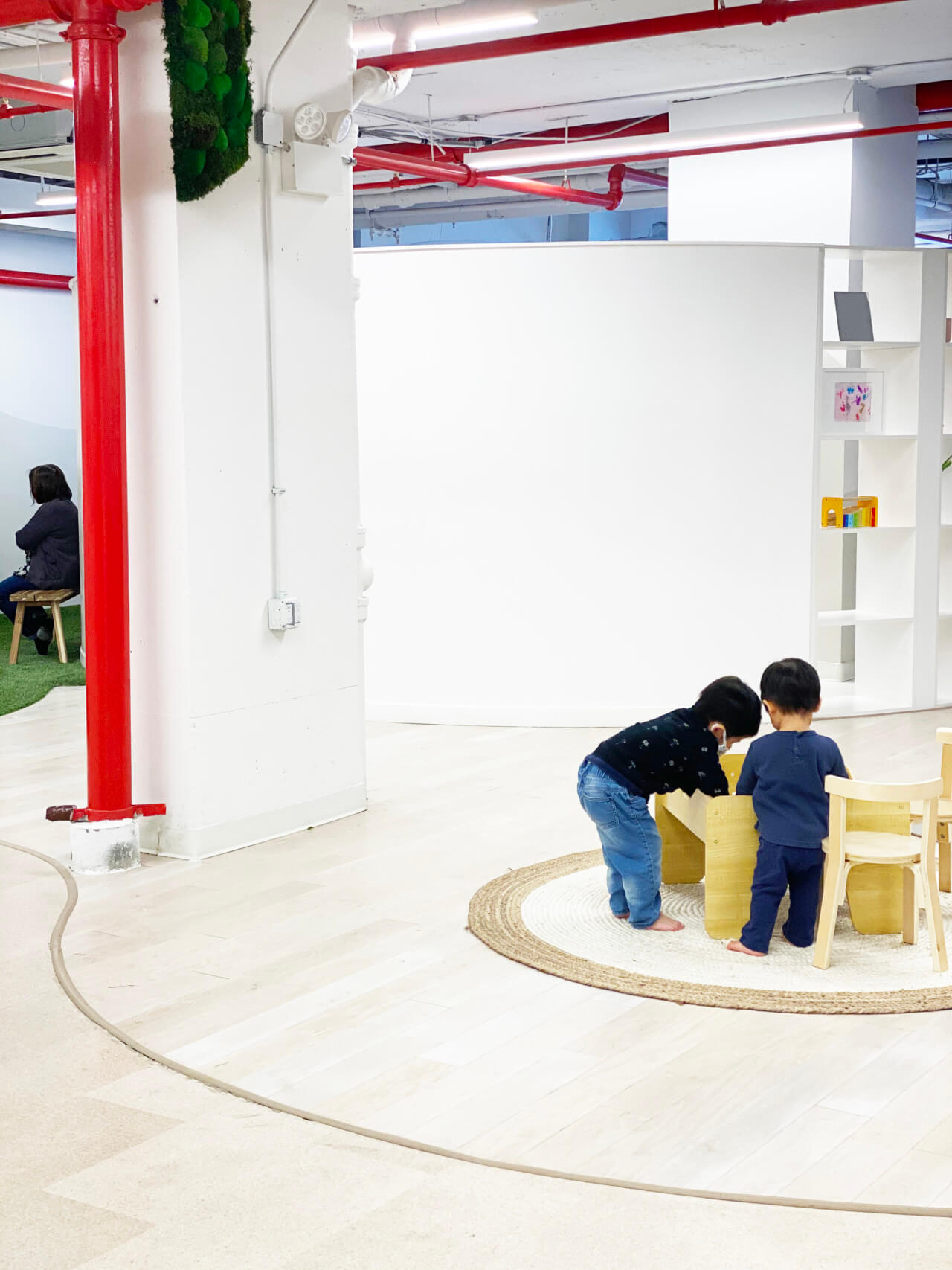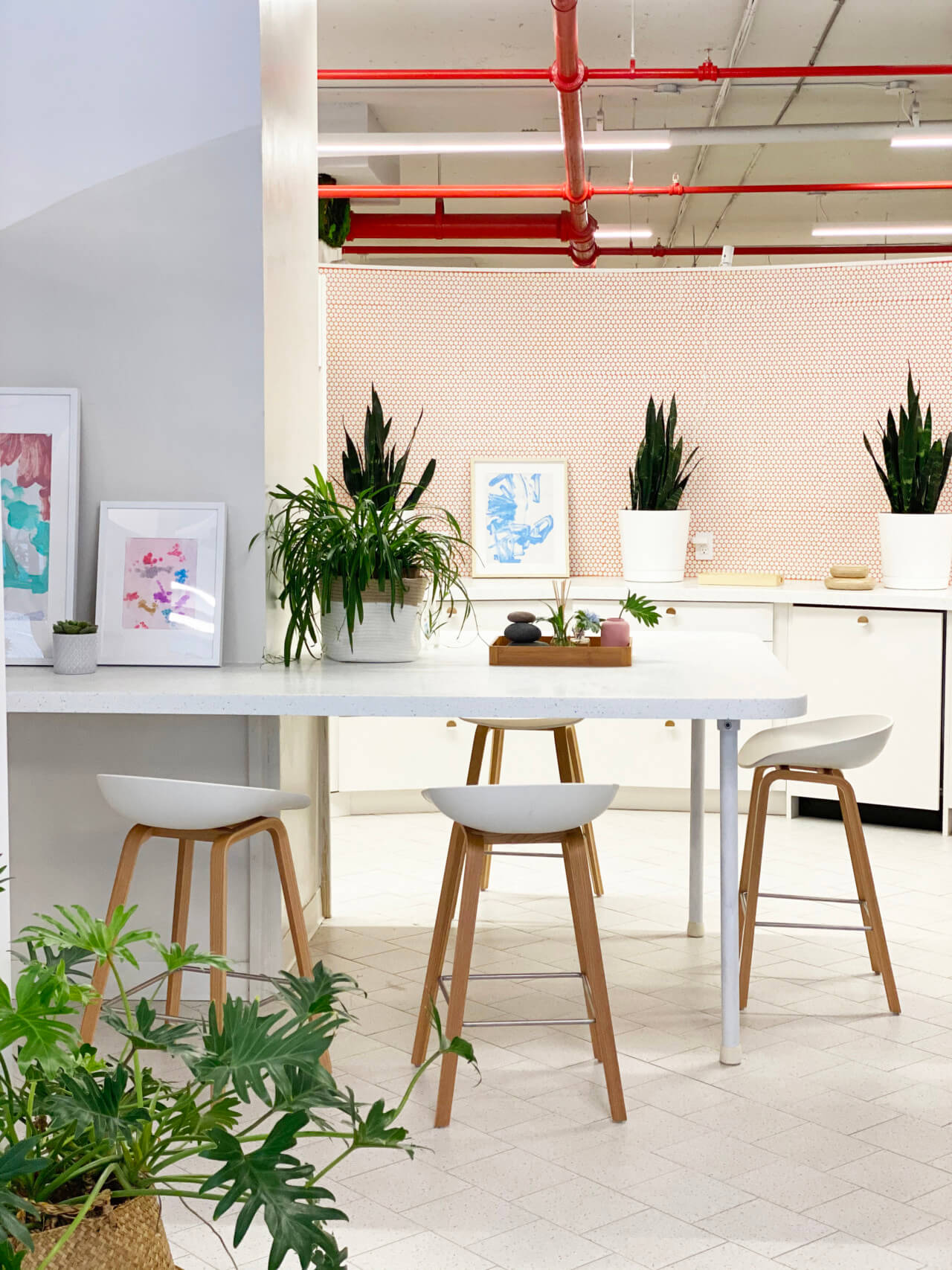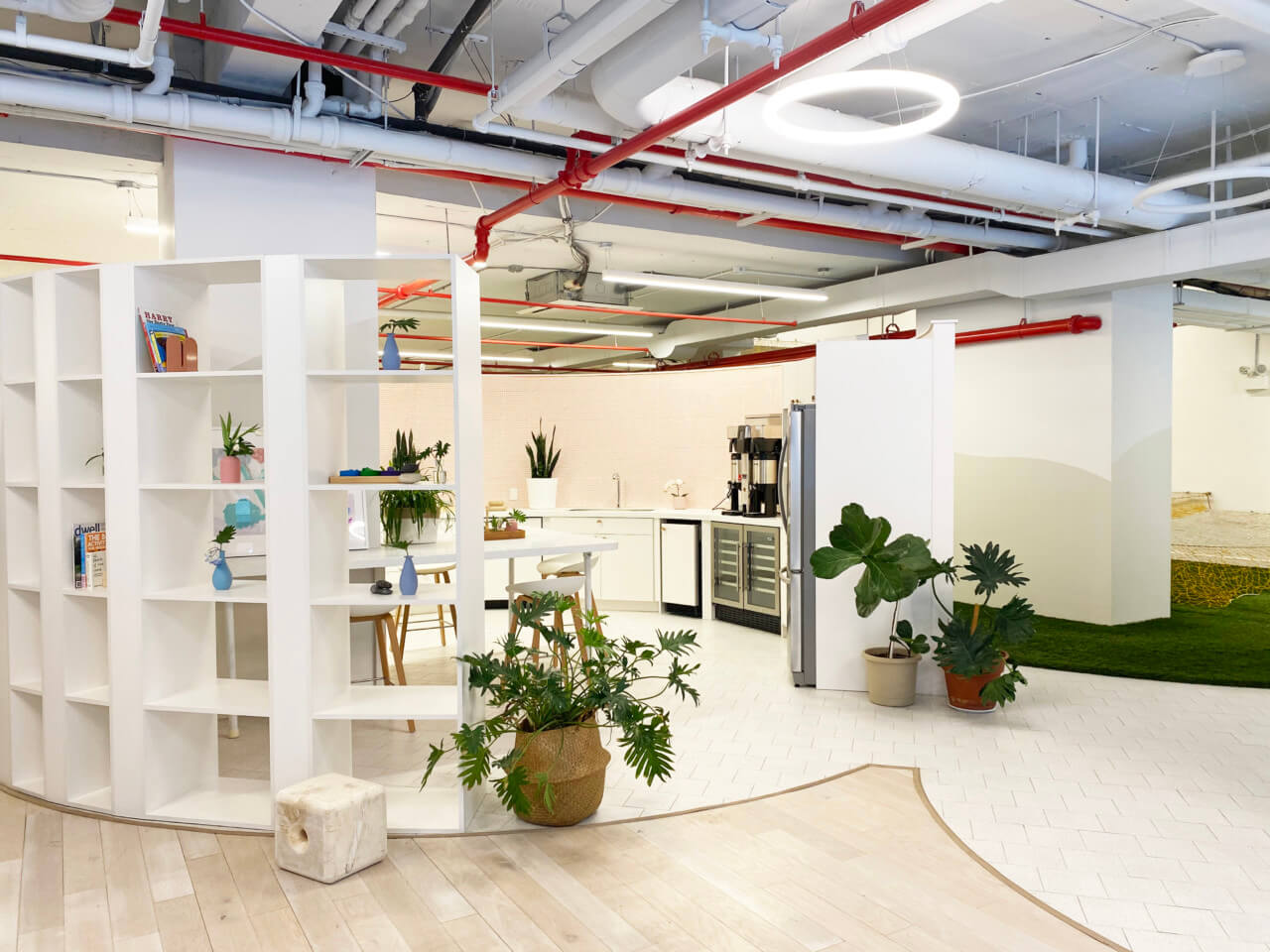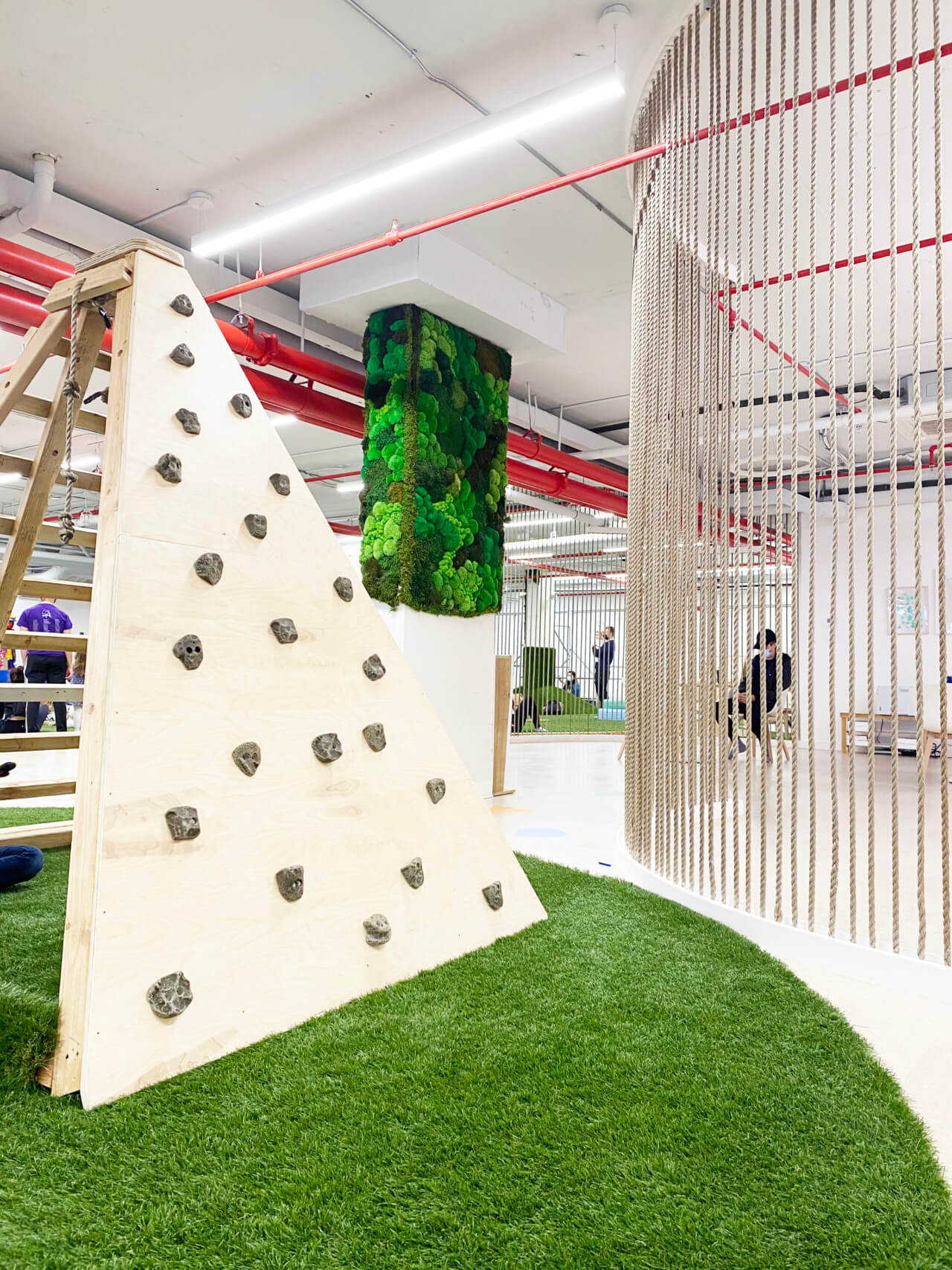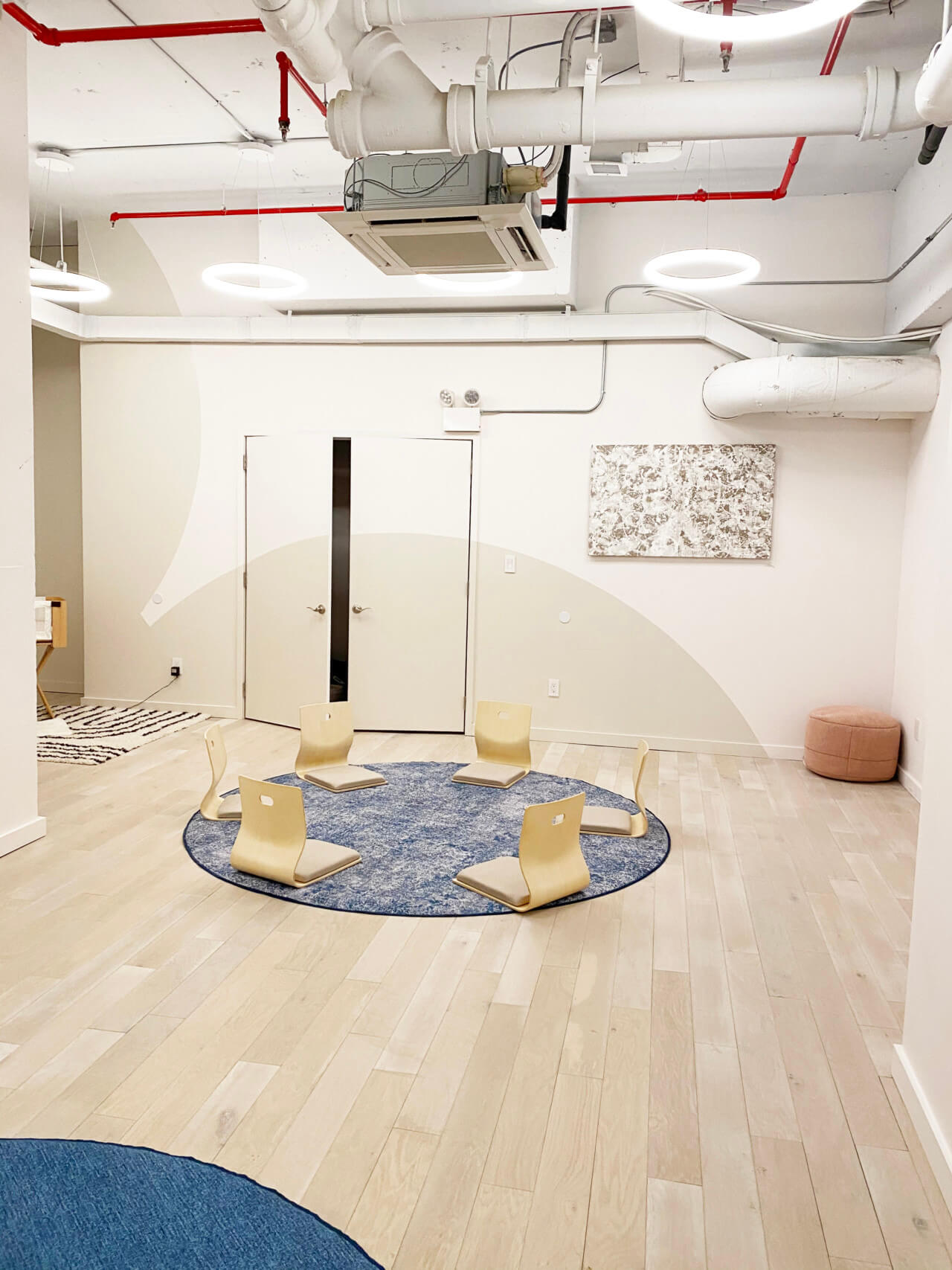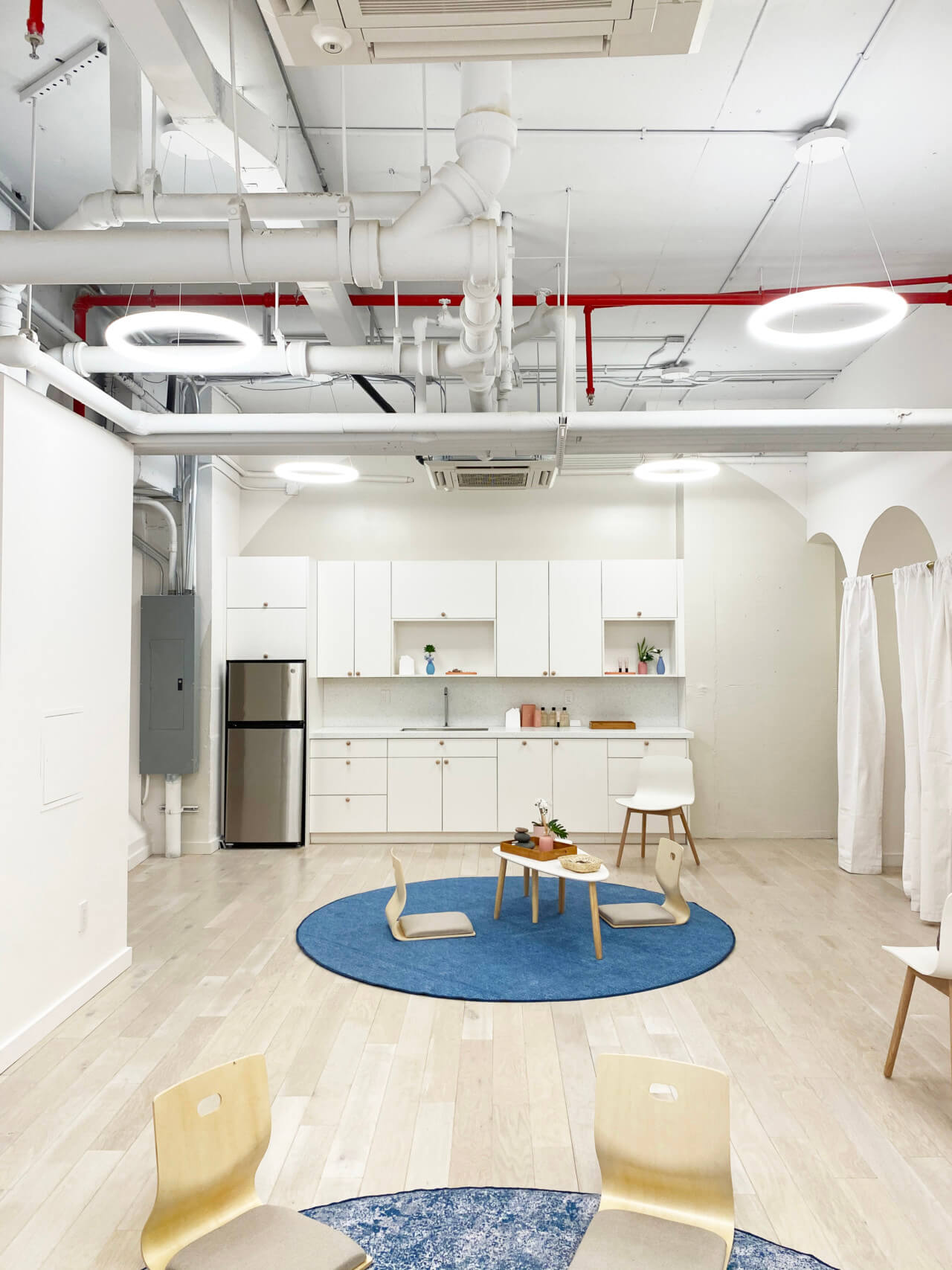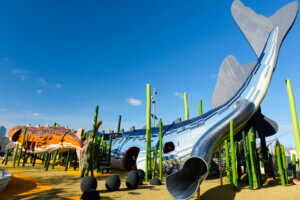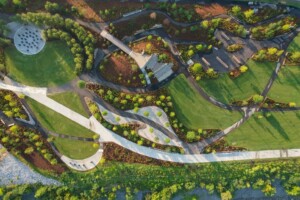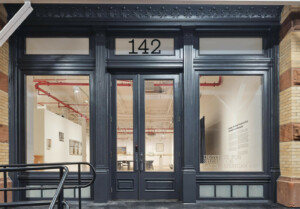The indoor playground typology in New York City is experiencing a major moment, despite the ongoing global pandemic. Last August, Architensions opened the Isamu Noguchi-inspired Children’s Playspace in Brooklyn while Inaba Williams recently completed the warrenlike Cast Iron House Playroom in Manhattan. Joining the field is the sprawling new Tribeca location of Cocoon, a members-only family hub and playground designed by Brooklyn’s Overlay Office.
The 18,000-square-foot flagship simultaneously provides a play space, classrooms, lounges and working areas for parents, a nursery, kitchens, and more across a ground and basement level. For Overlay Office, the biggest design challenge was bringing a holistic program and softness to the expansive space, which was formerly a Best Market supermarket with exposed concrete columns and floor slabs.
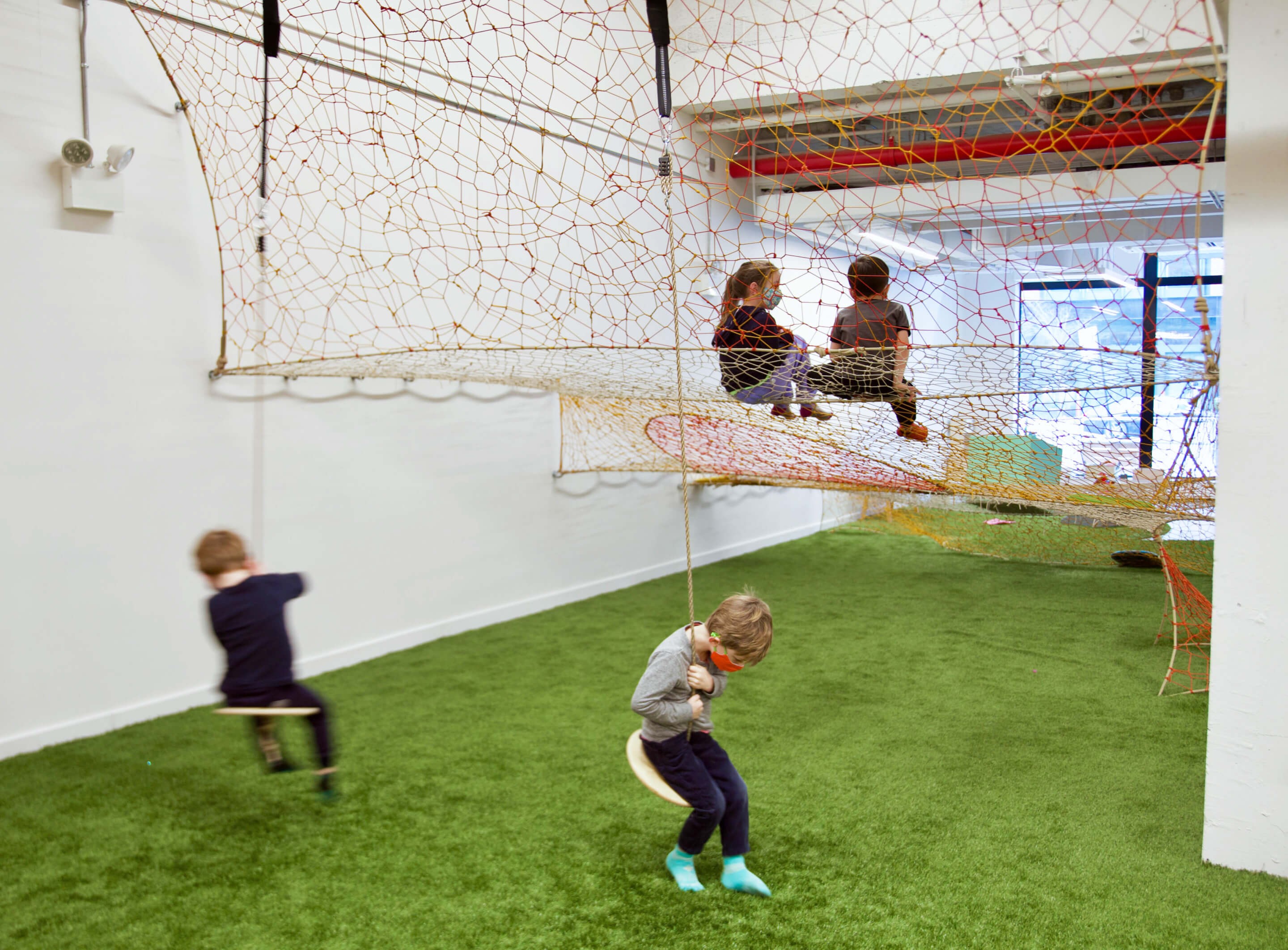
“We decided early on that the space should be as open as possible and take on a park-like quality where there are not many walls and the different programs throughout the space are designated by changes in materials, millwork, or ceiling fixtures,” said Abigail Coover, founder and director of Overlay Office, in a press release.
To that end, each area is delineated not be solid fixtures or walls but, as Coover mentions, changes in finishes, color, and equipment on display. The most prominent example is the Yard. Set at the rear of the first floor, the freeform indoor playground is made of topographically varied artificial turf and covered in colorful tires and reconfigurable wooden playsets. Conversely, bordering the Yard are nooks for parents to work and relax in, semi-enclosed by ropes to provide a permeable barrier (obviously useful for keeping an eye on children outside).
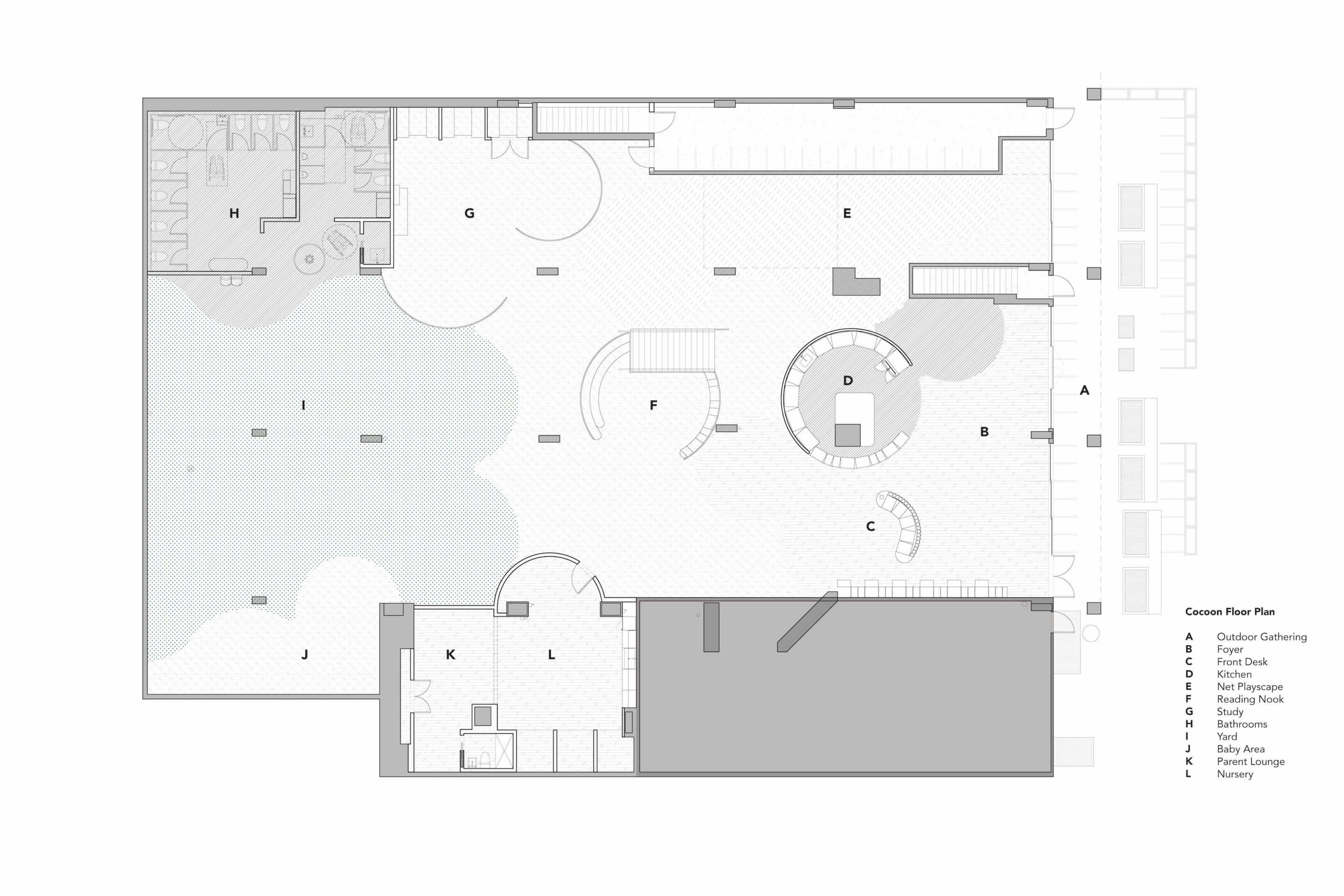
According to Coover, the use of curved walls and floor patterning throughout was intended to guide children toward each other and create soft, unthreatening shapes devoid of hard angles. That extends from the front reception desk to the walls of the reading nook, to the arches above the Wing-like study for parents, to the light fixtures, and even the circular first-floor kitchen.
Although the basement is much more utilitarian in its programming and layout, containing classrooms, a staff room, bathrooms, and storage bounded by linear walls, rounded flooring accents easily separate the wide parkour area from the more structured facilities there.
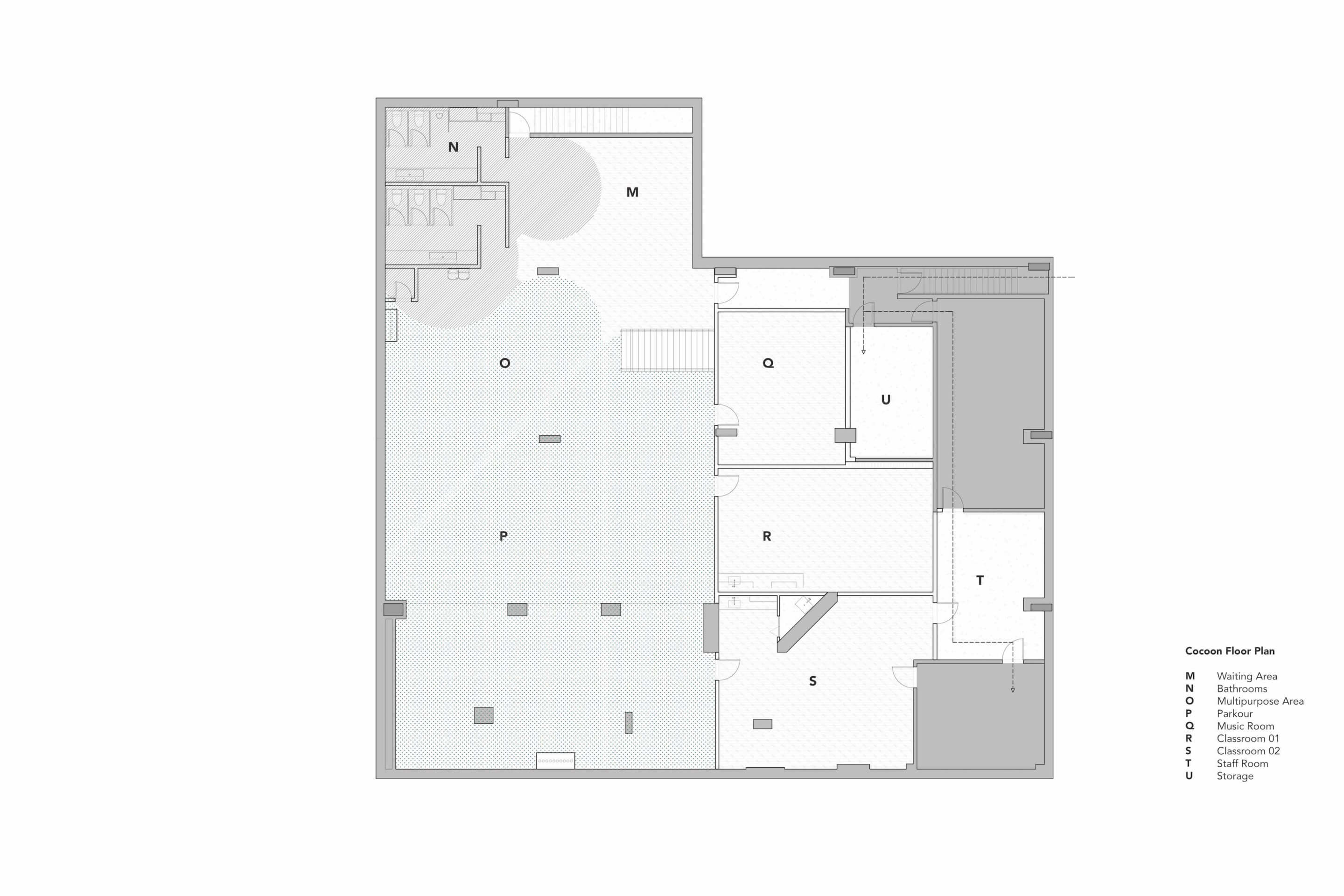
Cocoon opened in November of 2020, right in the middle of the COVID upswing in New York, and Overlay Office needed take that into account when laying out the programming to help prevent the disease’s transmission. That included cutting occupancy to 50 percent and giving each visitor 65 square feet of personal space, implementing a single direction circulation plan from the dedicated entrance to exit and installing colorful graphics to help guide parents and children, and specifying easy-to-clean hard surface materials and fabrics throughout (though that’s likely a necessity in any childcare facility).
This is only the first phase of Cocoon, and there’s more on the way. That includes nursing pods, currently being designed by Coover’s students at Pratt Institute, murals and a terrazzo texture to be projected on across the arches and walls of the study area, the addition of amphitheater-style seating to the reading nook, and the suspension of colored fabric, moss, and string from the ceilings throughout are all planned for phase two.






